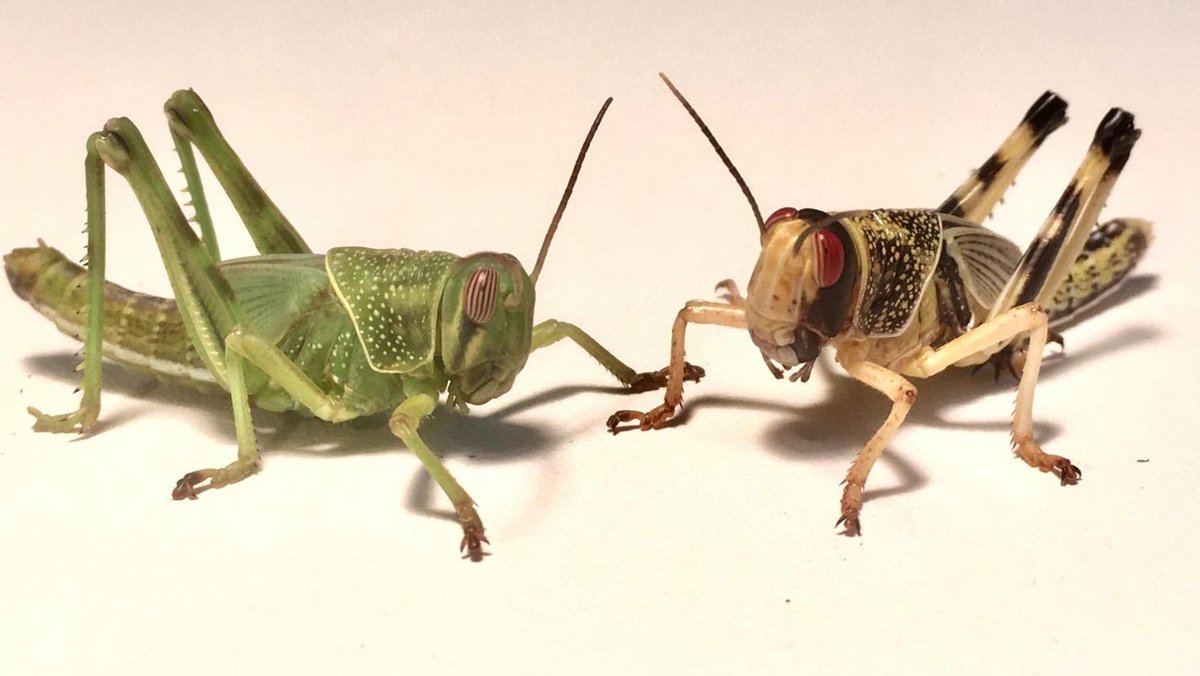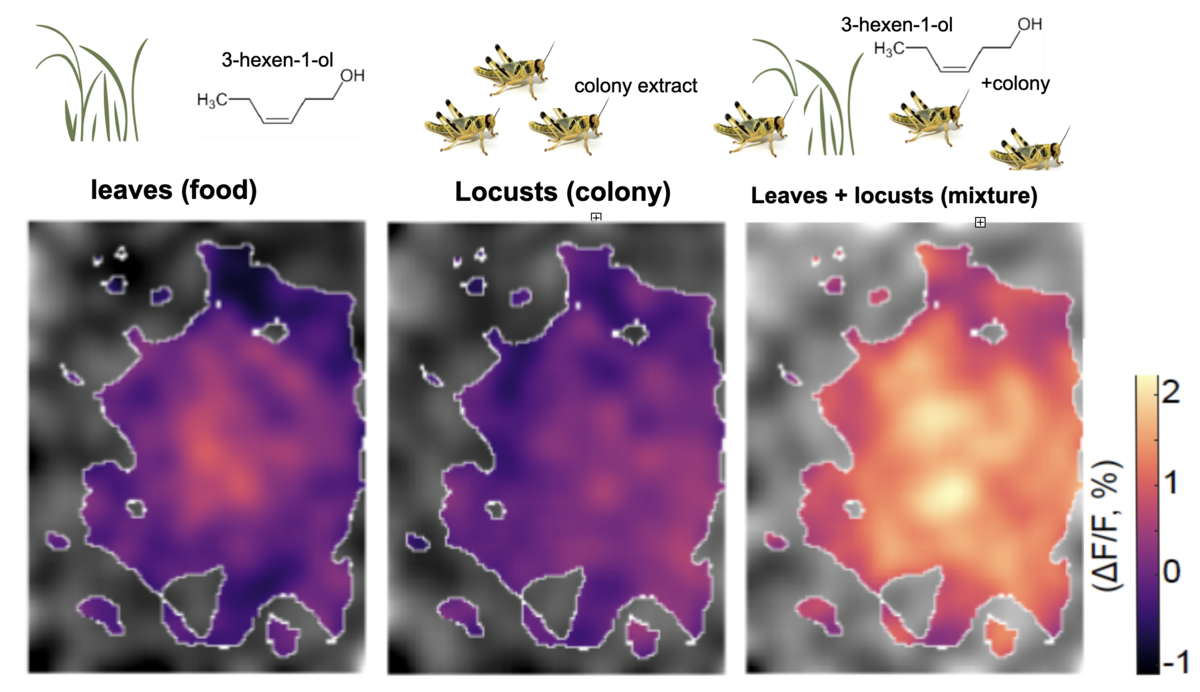
Image: Divya Ramesh
Neurobiology of social behaviour in insects
By means of state-of-the-art molecular and analytical techniques, Divya Ramesh, Einat Couzin-Fuchs, and Morgane Nouvian want to derive the neural mechanisms of social behaviour in insects. Their research objects are locusts. “The fascinating aspect is that locusts become ‘social’ and highly eusocial insects like honeybees only transiently,” explains Ramesh. The researchers use immediate early genes to look at neuronal activity. This method has been established for a few insects, but not for locusts. “This would be a first step in understanding the regions of the brain involved in the phase transition seen in these insects,” explains the team, which is moving forward with its research work.
In 2021, they made excellent progress with mass spectrometry and started to develop in situ hybridization protocols for monitoring the expression of immediate early genes in locusts. Now they are looking forward to working on the behavioural assays for group marching in locusts in the new labs of the VCC.

Image: Divya Ramesh
